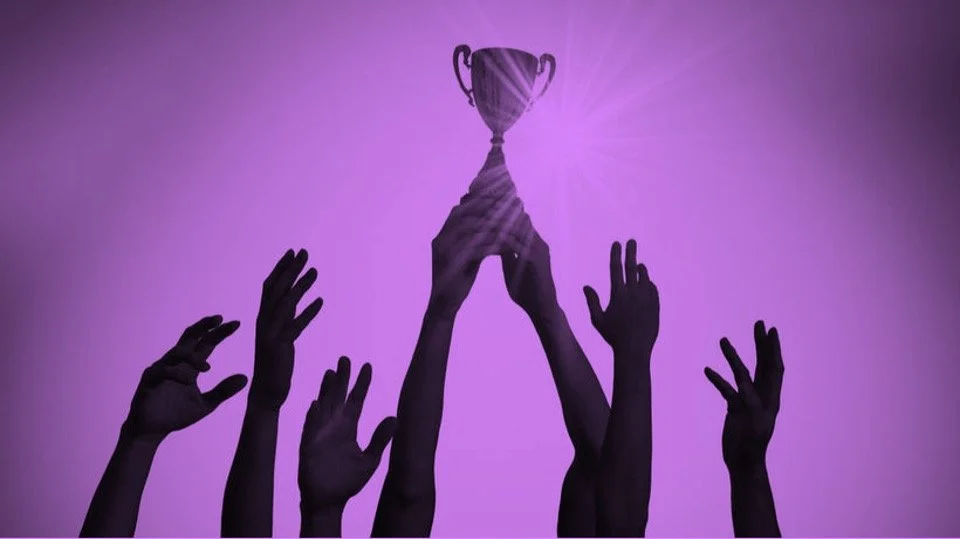Gamifying Sales: How to Motivate Your Team and Increase Revenue 🕹️
In the dynamic world of sales, finding innovative ways to motivate your team and drive performance is crucial. Traditional incentive structures, while effective to some extent, often fail to sustain long-term engagement. This is where gamification comes in. By turning sales activities into a game, businesses can tap into the natural human desire for competition, achievement, and recognition. But how does gamification work, and how can it be applied effectively to increase sales revenue? Let’s explore.
The Psychology Behind Gamification
At its core, gamification leverages the psychological principles of motivation and reward. Humans are inherently driven by goals, feedback, and a sense of progress. Gamification taps into these drivers by providing clear objectives, instant feedback, and tangible rewards.
Intrinsic motivation comes from within; it’s the joy and satisfaction one gets from the activity itself. Extrinsic motivation, on the other hand, involves external rewards such as money, trophies, or recognition. Gamification effectively combines both types of motivation. The game elements provide intrinsic enjoyment, while the rewards offer extrinsic incentives.
Competition is a powerful motivator. Leaderboards and competitive challenges create a sense of urgency and a desire to outperform peers. Achievement, marked by earning badges or reaching new levels, satisfies the need for recognition and progress. According to a study by Badgeville, companies that use gamification experience a 48% increase in employee engagement (Badgeville).
Designing Effective Gamification Strategies
Implementing gamification in sales requires more than just adding a few game elements. It involves a thoughtful design that aligns with your sales goals and team dynamics. Here are some key components:
Clear Objectives and Goals
The first step is to define clear, achievable objectives. These could be daily, weekly, or monthly targets. Clear goals provide direction and purpose, making it easier for sales reps to focus their efforts.
Progress Tracking and Feedback
Instant feedback is crucial for maintaining engagement. Sales reps should be able to see their progress in real-time. This can be achieved through dashboards that track performance metrics and display leaderboards. Regular feedback sessions can also help in providing personalised insights and guidance.
Meaningful Rewards
Rewards should be meaningful and desirable. This could range from monetary bonuses to non-monetary incentives like additional time off, recognition at company meetings, or professional development opportunities. The key is to understand what motivates your team and tailor rewards accordingly.
Real-World Examples of Gamification in Sales
Several companies have successfully implemented gamification strategies to boost sales performance. Here are a few notable examples:
Salesforce
Salesforce introduced a gamified application called “Salesforce Trailhead” to enhance the learning and development of its sales team. Trailhead uses modules and badges to guide users through learning paths, making the training process more engaging and effective. According to Salesforce, this initiative led to a significant increase in sales productivity and knowledge retention (Salesforce Trailhead).
LinkedIn used gamification to drive the adoption of its Sales Navigator tool. By incorporating game elements like progress bars, completion badges, and leaderboards, LinkedIn motivated its sales teams to engage more deeply with the tool. This gamified approach resulted in higher adoption rates and improved sales performance (LinkedIn Sales Solutions).
Implementing Gamification in Your Organisation
To implement gamification effectively, it’s essential to follow a structured approach. Here’s how you can get started:
Assess Your Needs and Objectives
Begin by assessing your current sales processes and identifying areas where gamification could add value. Define clear objectives for what you want to achieve with gamification, whether it’s increasing sales, improving team collaboration, or enhancing training.
Choose the Right Tools and Platforms
There are various gamification platforms and tools available that can integrate with your existing sales systems. Choose a platform that aligns with your objectives and offers the features you need, such as leaderboards, badges, progress tracking, and feedback mechanisms.
Engage and Train Your Team
Introduce gamification to your team with a clear explanation of how it works and the benefits it offers. Provide training on how to use the gamified systems and encourage feedback to continuously improve the process.
Monitor and Adjust
Once implemented, regularly monitor the impact of gamification on your sales performance. Use data and feedback to make necessary adjustments and keep the gamification elements fresh and engaging.
The Benefits and Challenges of Gamification
While gamification offers numerous benefits, it also comes with challenges that need to be addressed.
Benefits
1. Increased Engagement: Gamification makes routine tasks more engaging, leading to higher motivation and productivity.
2. Improved Learning and Development: Game elements make training more interactive and enjoyable, leading to better knowledge retention.
3. Enhanced Team Collaboration: Competitive and collaborative game elements can foster a stronger team spirit and improve communication.
Challenges
1. Sustaining Interest: The novelty of gamification can wear off over time. It’s essential to keep the game elements fresh and varied.
2. Balancing Competition and Collaboration: While competition can be motivating, it’s important to balance it with collaboration to avoid creating a cutthroat environment.
3. Measuring Effectiveness: Tracking the impact of gamification on sales performance requires robust data analytics and continuous monitoring.
My Thoughts on Gamification
Gamification in sales is a fascinating and highly effective strategy, but like any tool, it must be used thoughtfully. The key to success lies in understanding your team’s motivations and designing a gamification strategy that aligns with those motivations. It’s not just about adding leaderboards and badges; it’s about creating an environment where salespeople feel valued, challenged, and recognised.
In my experience, the most successful gamification initiatives are those that are well-integrated into the company’s culture. When gamification becomes a natural part of the daily workflow rather than an external add-on, it can drive significant improvements in performance and morale.
Moreover, it’s crucial to keep the human element at the forefront. While technology can enhance the gamification experience, personal interactions, and real-world rewards play a vital role in maintaining engagement and motivation. Regular check-ins, personalised feedback, and recognition can amplify the benefits of gamification and foster a positive, productive sales environment.
Conclusion
Gamifying sales is more than just a trend; it’s a powerful strategy to motivate your team and increase revenue. By understanding the psychology behind gamification, designing effective strategies, and learning from real-world examples, you can harness the full potential of this approach. While there are challenges to be mindful of, the benefits of increased engagement, improved learning, and enhanced team collaboration make it a worthwhile investment.
Implementing gamification requires thoughtful planning, continuous monitoring, and a commitment to keeping the experience fresh and engaging. By doing so, you can create a motivated, high-performing sales team that drives your business towards greater success.
References:

